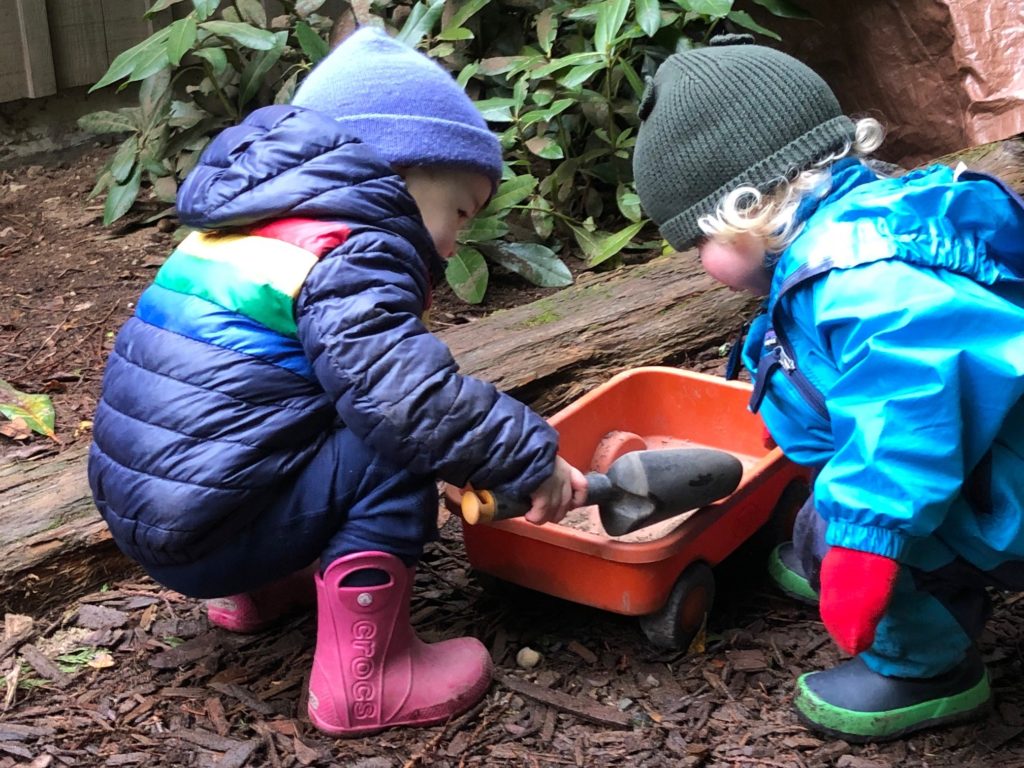After a year’s hiatus at the Whidbey Island Waldorf School (WIWS) because of COVID, children have resumed their classes and had a full autumn’s worth of subjects, increased outdoor time, and festival life. The nursery program, blending outdoors and indoors time, was among the only segments of the school to continue operating last year, together with the outdoors classes for the mixed-age kindergarteners. This year, the Little Woods Nursery is providing a safe environment for children, many affected by isolation during COVID, to grow and flourish with their peers.
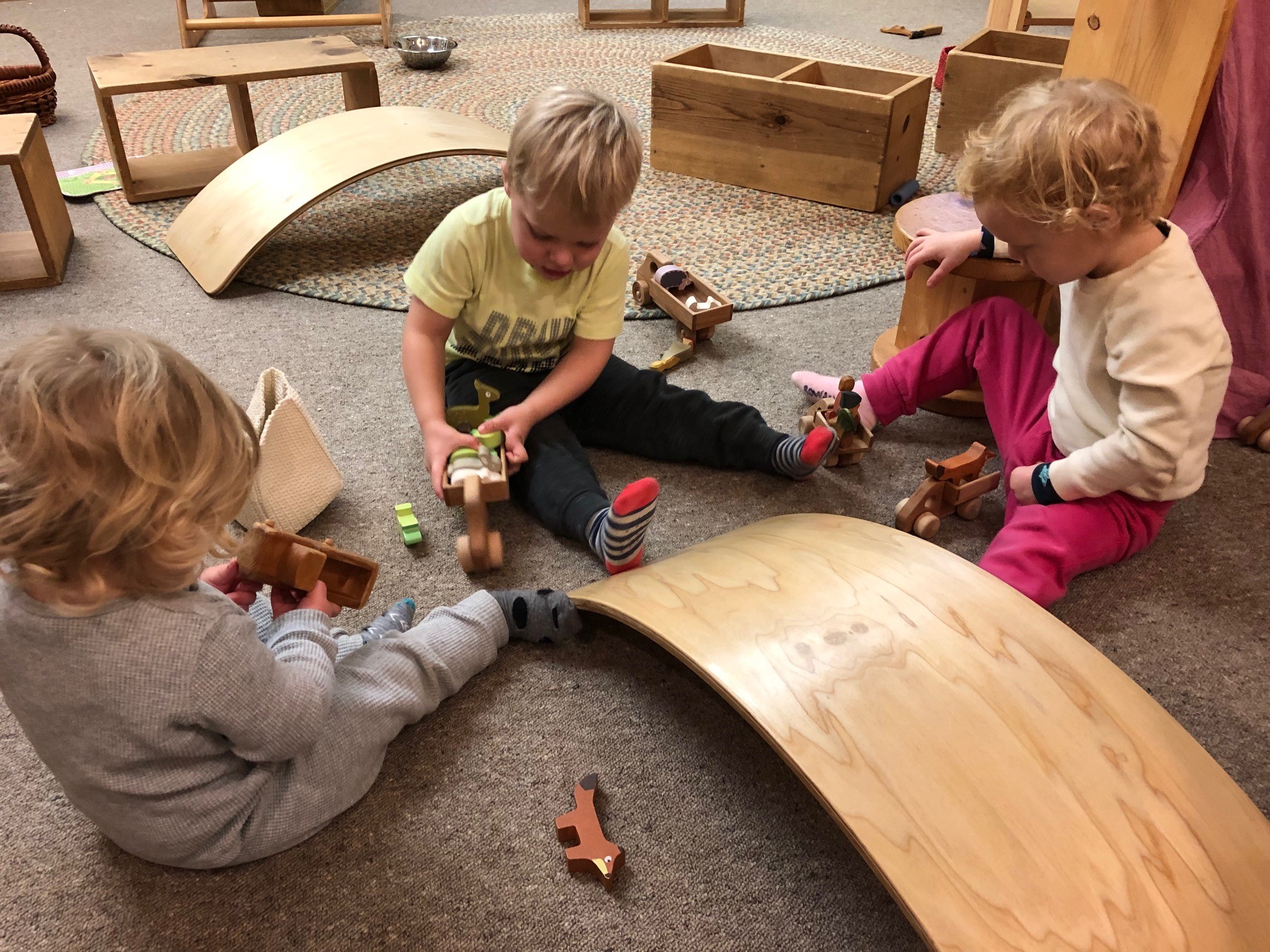
Ranging in age from 1- to 3-years-old, toddlers, some of whom haven’t met others outside of their family setting, are stretching their growing limbs, senses, and communication skills by virtue of having a safe and nurturing space for interacting together.
WIWS, founded over 35 years ago on the south end of an island near to Seattle and reachable by ferry (and a bridge at the north end), has provided a full array of classes and activities to grades pre-K through 8, sometimes with blended grades and/or homeschool support. Outdoor education is one of its hallmarks, surrounded as it is by 100 acres of forest.
The Little Woods nursery provides the best of both worlds, appropriate to their development–2 outdoor segments surrounding an indoor time for two hearty snacks, artistic activities, and play with wooden toys. With air purifiers and cross air ventilation, and conscientious parents checking on their children’s health each day, the nursery has kept going, providing loving care, healthy food, and a nurturing and safe environment for all of its families.
As the teacher (with assistants, Lesley Boyland and Kelly Myers) of this extraordinary program of 14 children on any given day, I have seen so many situations of interpersonal growth that may have been taken for granted as happening regardless of an appropriate social setting. Several children in the 1-through 3-year-old age range have made strides that have boosted their self-confidence and transformed their communication skills.
Most recently, one child whose language hadn’t kept pace with his ideas and intentions was visibly frustrated and demoralized by not being understood. He tried various ways to find friends beyond language, sometimes by being loud and fast and “entertaining.” Recently, he discovered a child with a kindred soul whose music and physical movement (ie dance) resonated with him, and taking his lead, set up some instruments, sang, and moved along in space to feel the camaraderie of someone with whom he could communicate. No longer does he need to race in circles, push beyond others’ boundaries, and stake physical claim to possessions to feel seen. He had made a necessary breakthrough.
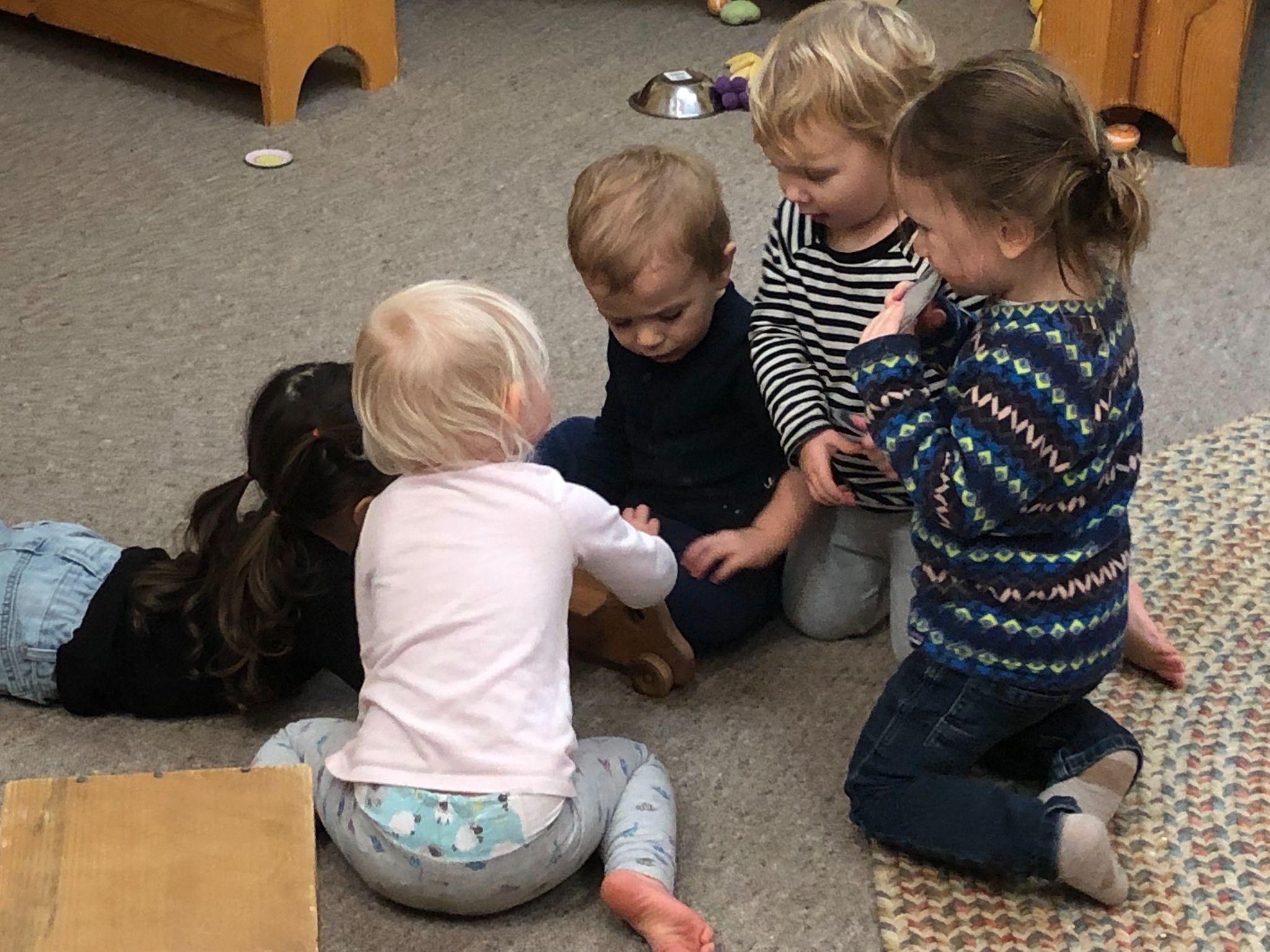 Other examples of social growth involve empathy, and our mixed-age approach enables those in the 3-year-old range to teach younger children. Compassionate children reach out and care for their younger friends, sometimes imitating their “mishaps,” and through the power of peers, provide an example of social care that appeals to the group more powerfully than if taught didactically. Though we teachers show compassion, provide refuge, and show caring practices, it is the children who actively demonstrate that sensibility that most powerfully imprint those around them.
Other examples of social growth involve empathy, and our mixed-age approach enables those in the 3-year-old range to teach younger children. Compassionate children reach out and care for their younger friends, sometimes imitating their “mishaps,” and through the power of peers, provide an example of social care that appeals to the group more powerfully than if taught didactically. Though we teachers show compassion, provide refuge, and show caring practices, it is the children who actively demonstrate that sensibility that most powerfully imprint those around them.
Parent separation is usually the first difficulty children face when attending a school program. Often the children warm into the rhythm (schedule of activities) that our program maintains and enjoy the anticipation of finding their friends they’ve grown to love. However, there are situations where children keep their distance and create detachment, even actively keeping others away with unappealing behavior. One of our students was so uncomfortable being away from his mother that he cried with a loud, high-pitched scream that could be heard throughout the school. The effect of this was not only shocking, but created a negative resonance among children and adults, as well. Taking his time in short segments that increased incrementally along with giving him reassurance and awareness of ways to breathe and relax into time frames enabled him (and his family) to see the joy in the program and children enrolled in it, and to warm and soften into the (school) space for free play, stories and puppetry, and eating snacks together.
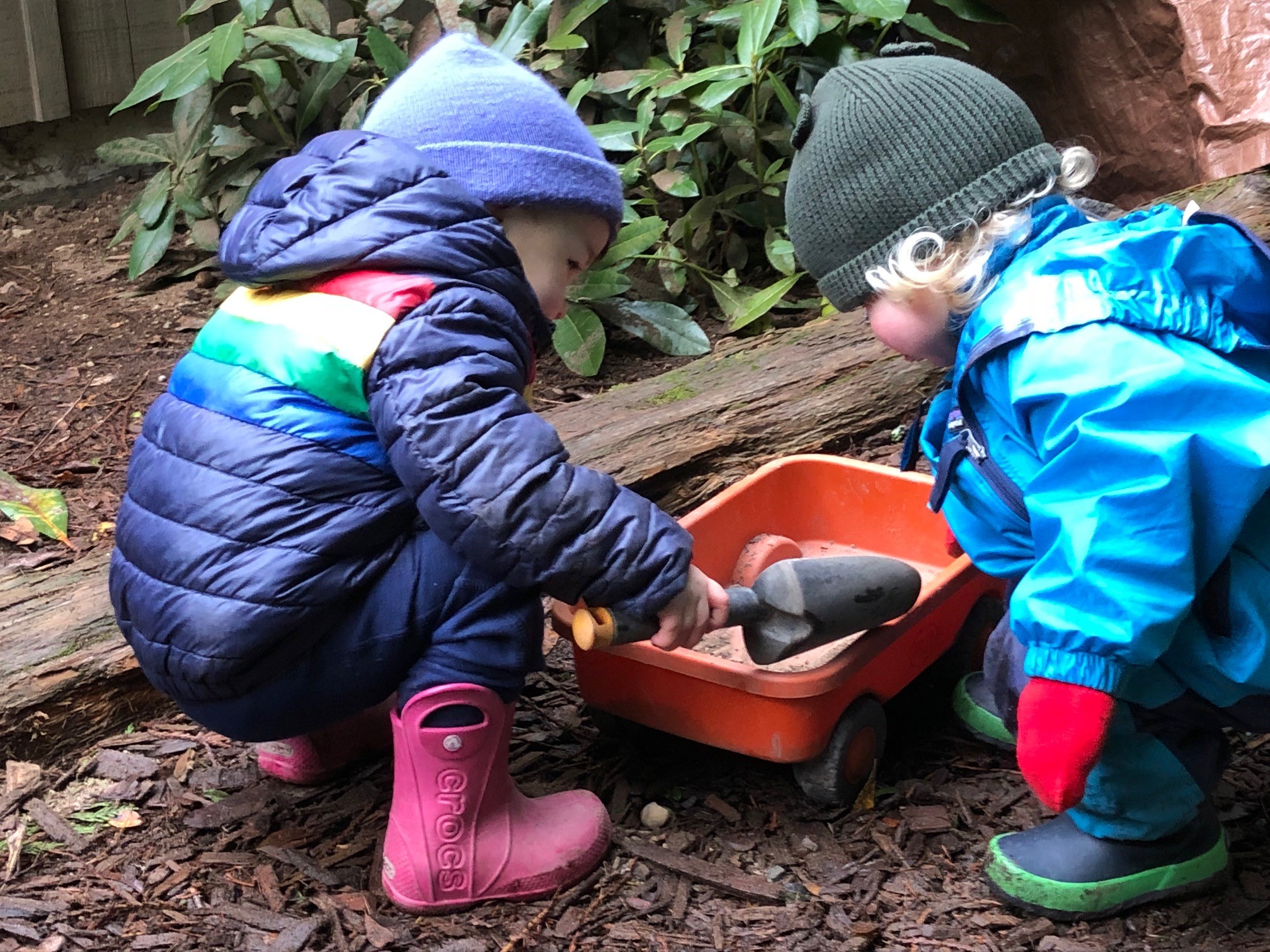 Activities that we offer (but do not require the children’s participation) include puppet stories given at the same time each day in a circle setting outdoors, sitting under a tarp-covered area on short tree stumps. Children often use this area for play by walking around, stepping up and down, bringing toys to put onto, and testing their balance. At 9:00 am, however, we gather together there for songs, finger plays, and a puppet story about woodland animals and friends who work together and care for one another in everyday adventures, such as they may have had at home or outdoors with their families. Little by little, the children learn and imitate the phrases, gestures, and songs, and anticipate the story theme. More puppets are introduced when special celebrations or festivals are happening, and the children can see what festivals mean in a pictorial way and how we will celebrate them before bringing our lanterns (which they’ve been invited to help make) on a short walk through our woods, for example.
Activities that we offer (but do not require the children’s participation) include puppet stories given at the same time each day in a circle setting outdoors, sitting under a tarp-covered area on short tree stumps. Children often use this area for play by walking around, stepping up and down, bringing toys to put onto, and testing their balance. At 9:00 am, however, we gather together there for songs, finger plays, and a puppet story about woodland animals and friends who work together and care for one another in everyday adventures, such as they may have had at home or outdoors with their families. Little by little, the children learn and imitate the phrases, gestures, and songs, and anticipate the story theme. More puppets are introduced when special celebrations or festivals are happening, and the children can see what festivals mean in a pictorial way and how we will celebrate them before bringing our lanterns (which they’ve been invited to help make) on a short walk through our woods, for example.
Some plans for the next season include a dedicated music time (in the mood of the fifth) with a creative dance aspect, more time with wool yarn, felt, and roving, and areas for dressing-up with hats and colorful silk scarves. However, often the children lead and show us what they want in the myriad open-ended toys they find, and we oblige.
Topping off the enjoyment we have together is snack time, where we revel in the harmonious mood of the time to share a meal. As much as possible, we involve the children in snack preparation and clean-up, and the highlights of the week happen during baking and soup days when kneading and shaping and chopping are needed. Practical work deepens their will and taps into their natural desire to help.
From 1 to 3 years old, once they begin walking and have some awareness of their toileting needs, children do benefit from sustained interaction with their peers in a nurturing setting. They grow in perceptible ways, developing necessary skills and communication abilities with one another. What is required for success is a nature-based program with long periods of open-ended play and continual adult presence that includes activities that are alternately inwardly- and outwardly-oriented. Most crucial is the opportunity for them to develop their self-confidence and, subsequently, their desire to explore and experiment with what they find in their surroundings while learning from each other.
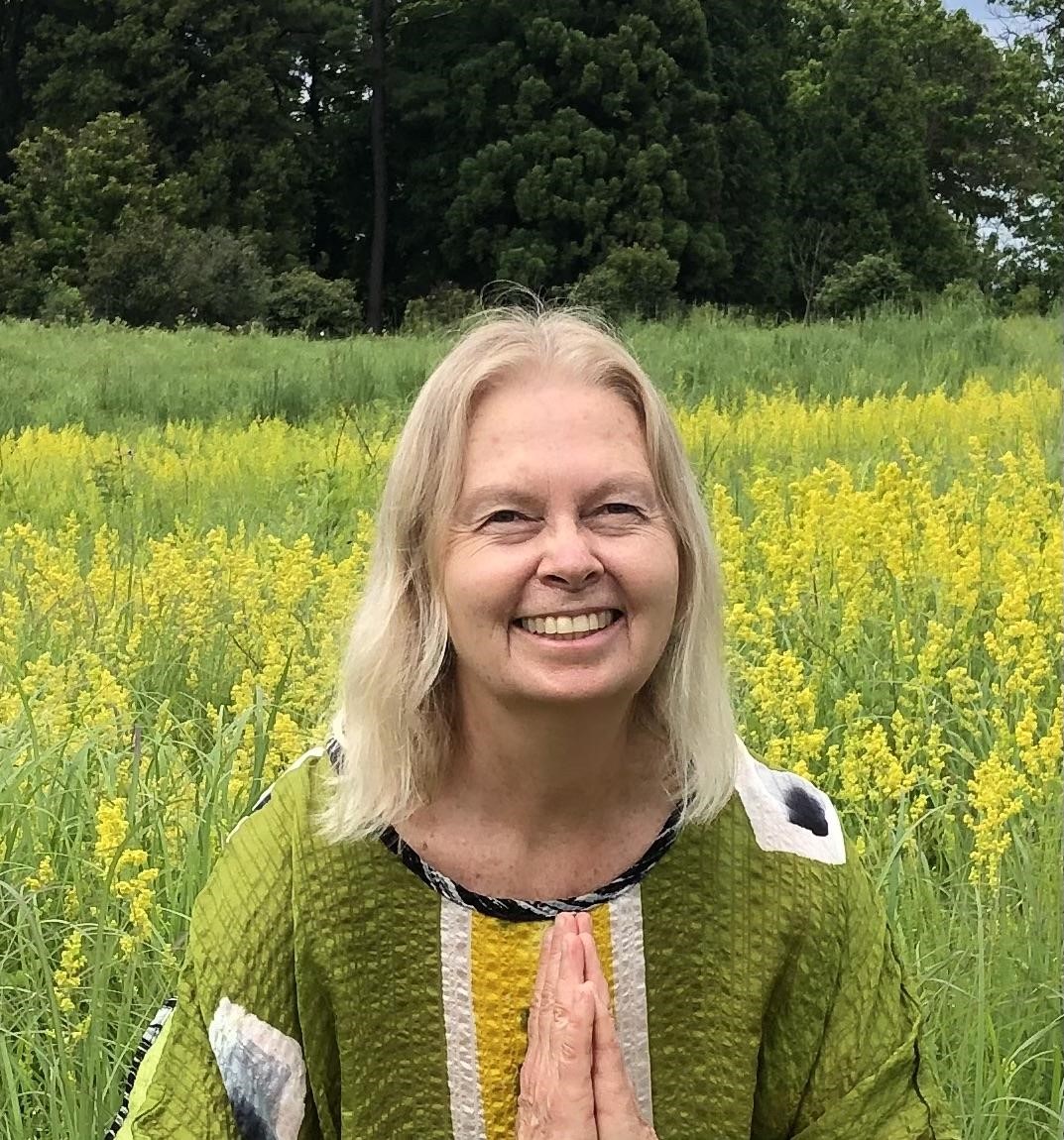 Catherine Falknor is a graduate of the Waldorf Early Childhood training program at Sound Circle Center for the Arts and Anthroposophy in Seattle, Wa. She has also taken classes in Pikler Pedagogy and at LifeWays in Outdoor Education, Loving Discipline, Singing Games. Besides WIWS, she has taught at Potomac Crescent, Washington Waldorf, Acorn Hill, and Portland Village Waldorf Schools. Before Waldorf, she was an English teacher in public, independent, and post-secondary schools.
Catherine Falknor is a graduate of the Waldorf Early Childhood training program at Sound Circle Center for the Arts and Anthroposophy in Seattle, Wa. She has also taken classes in Pikler Pedagogy and at LifeWays in Outdoor Education, Loving Discipline, Singing Games. Besides WIWS, she has taught at Potomac Crescent, Washington Waldorf, Acorn Hill, and Portland Village Waldorf Schools. Before Waldorf, she was an English teacher in public, independent, and post-secondary schools.
